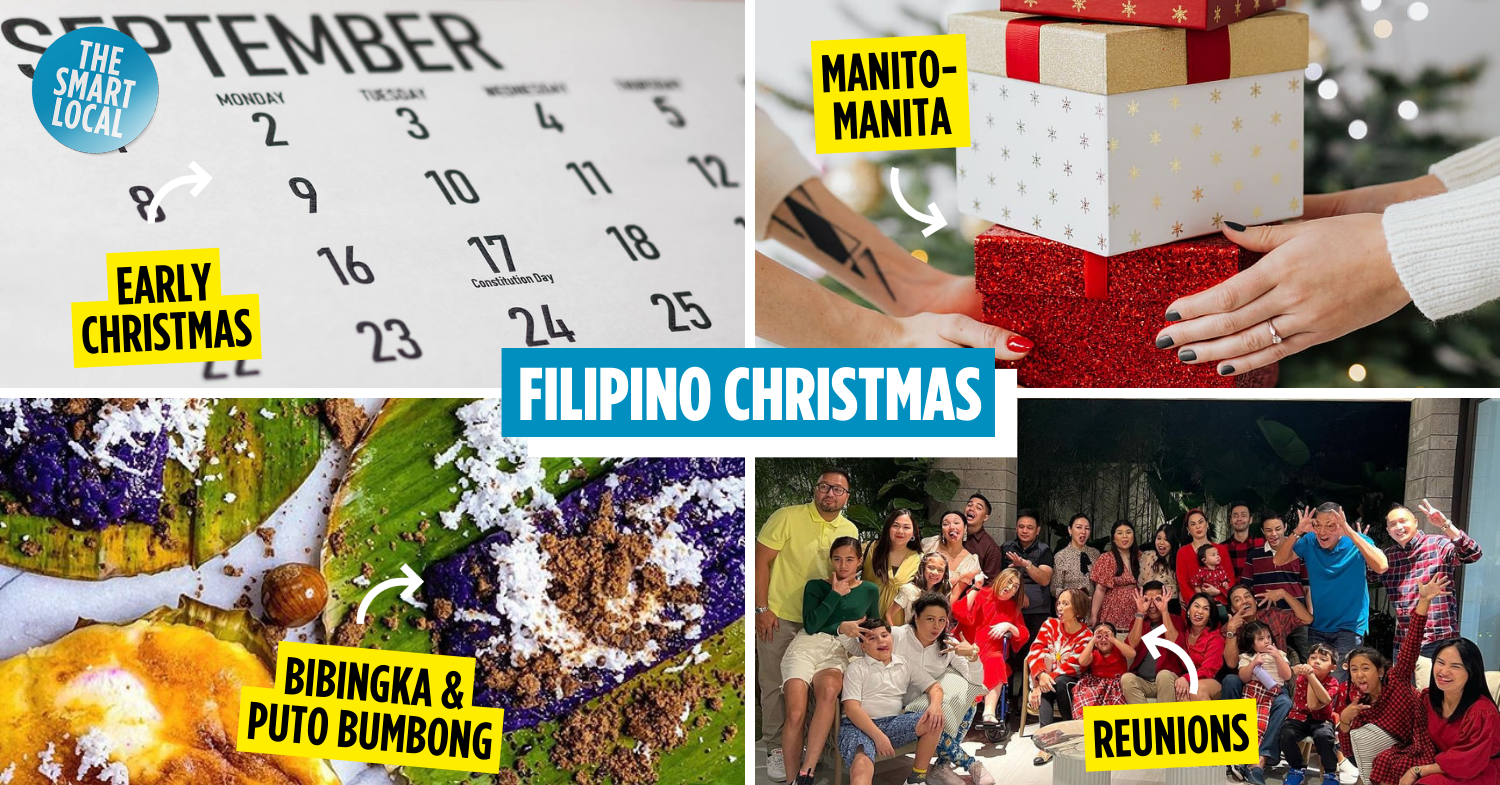Filipino Christmas traditions
Every country has its own set of traditions to follow for the Yuletide season, but Filipinos do it best. After all, we celebrate Christmas festivities for a longer period than any other country in the world. With a uniquely lengthy holiday, we’re bound to have more traditions and beliefs than any of our neighboring countries.
To that end, here are 14 Filipino Christmas traditions we’ll be looking forward to in the next few months. With Christmas fast approaching, we’re here to remind you of everything you can expect during an iconic Filipino Christmas season.
Table of Contents
- Filipino Christmas traditions
- 1. Starting Christmas in the -ber months
- 2. Setting up a Belen
- 3. Adorning buildings and posts with a parol
- 4. Attending Simbang Gabi
- 5. Indulging in Christmas food like bibingka and puto bumbong
- 6. Caroling from house-to-house
- 7. Attending Misa de Gallo on Christmas Eve
- 8. Holiday reunions
- 9. Waking up for Noche Buena
- 10. Manito-Manita
- 11. Awaiting Aguinaldo or Pamasko
- 12. Livestreams of Christmas New Year’s Eve Masses
- 13. Waking up for Media Noche
- 14. Ending Christmas in January with the Feast of the Three Kings
- Filipino Christmas traditions for the joyous season
1. Starting Christmas in the -ber months

Image credit: via Flickr
If you look up “longest Christmas season in the world”, the Philippines will come up as a result. For most, Christmas starts in December. But for Filipinos, Christmas starts the moment it’s September.
There’s no textbook explanation for why we celebrate Christmas so early, but there are theories. Perhaps it’s because of our predominantly Catholic beliefs, but then again, advent only starts in December. It’s certainly one of the most enduring Filipino Christmas traditions that even those living in abroad can testify to – we even start putting up the Christmas tree in September!
2. Setting up a Belen

Image credit: @printeta via Instagram
In most countries, nativity scenes – also known as the Belen – are only set up in churches or other religious spaces. But in the Philippines, it’s common to find it everywhere. In fact, every Filipino household will have one set up during the festive season.
A complete set is comprised of baby Jesus, Mary, Joseph, the Three Kings, as well as every barn animal you can think of, but many Belens exclude the last two since they’re not as essential. Whether it’s made of the original porcelain or recycled materials, you’ll see one in schools, building lobbies, and homes. Some schools and barangays even hold competitions for the best Belen, making for some lavish displays.
3. Adorning buildings and posts with a parol
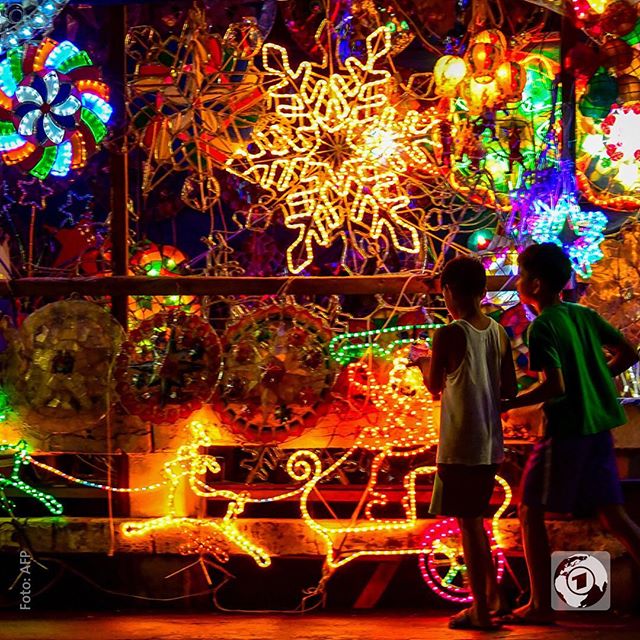
Image credit: @taggeschau via Instagram
Everyone knows about Christmas lights, but the Philippines has the parol (lantern), a Christmas ornament unique to us. Traditionally, parols come in the shape of a big circle with a star in the middle, but you can also choose from various designs like stars and flowers. It can also be made from different materials like plastic, wire, wood, or even recyclable materials.
The parol was originally made to hang on lamp posts to guide mass-goers to Simbang Gabi, but now they can be found everywhere like outside houses, in malls, and in offices.
4. Attending Simbang Gabi
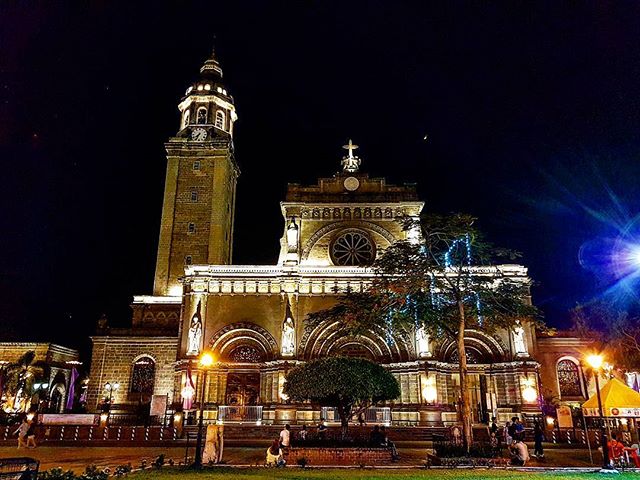
Image credit: @dokmarkus via Instagram
Simbang Gabi means “night mass”, which is basically what it is. Filipinos attend mass either late at night or in the wee hours of the morning for all 9 days before Christmas. We try to complete all 9 days, both as a religious practice and because of the belief that attending all 9 masses will grant you a wish.
To go with the season, churches are decorated to add a Christmas flair, and vendors often sell local Christmas goods like bibingka and puto bumbong outside after the mass.
5. Indulging in Christmas food like bibingka and puto bumbong

Image credit: @alwayshungryph via Instagram
Staying up or getting up for Simbang Gabi might make you hangry, but a serving of bibingka and puto bumbong should do the trick and calm you down. These are the two most popular and most loved Christmas treats that Filipinos never miss out on.
Both are variations of rice cakes – bibingka is baked in clay pots and leaves, while puto bumbong is steamed in bamboo tubes.
6. Caroling from house-to-house
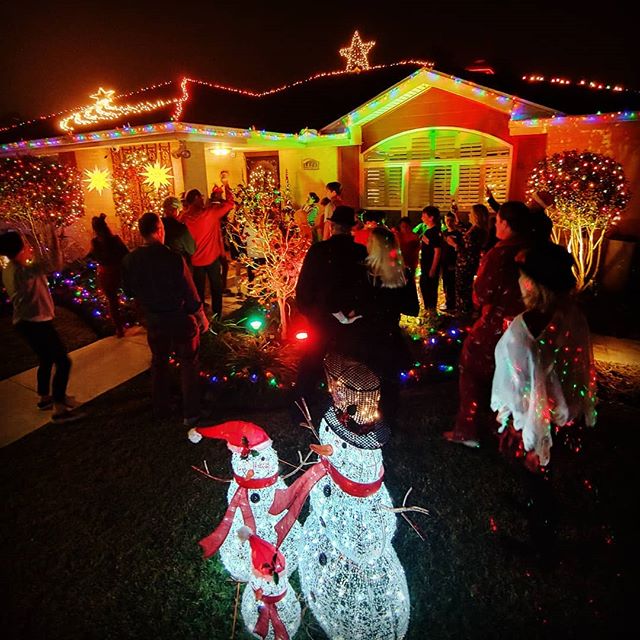
Image credit: @mackirks via Instagram
For most countries, Christmas caroling means a whole production of good vocals, coordinated outfits, instruments, and well-practiced Christmas tunes. For us, it’s become a humorous affair.
Filipino kids and adults alike go from house to house, starting from early December. Lyric books and Christmas costumes are ditched for recycled instruments and made-up lyrics. From the a-brim-bram-brooms to the jinggom bells, caroling is a sure mark that Christmas is coming.
7. Attending Misa de Gallo on Christmas Eve
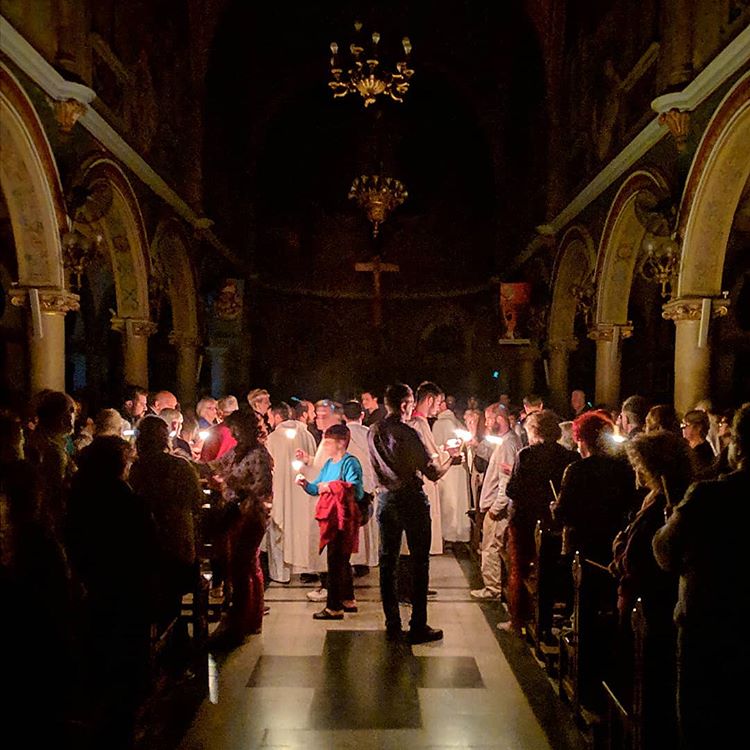
Image credit: @g_angular via Instagram
Regular Sunday masses follow a routine, but everything is extra special on Christmas. The Christmas mass that most Filipinos attend, Misa de Gallo, differs from regular Sunday mass. It’s a celebration that includes lighting candles, projector displays, and sometimes a re-enactment of the story of how baby Jesus was born
Misa de Gallo is also the first mass after the 9 days of Simbang Gabi. It is believed that if you go to all 9 days of Simbang Gabi, your wish and prayer can come true.
8. Holiday reunions
 Image credit: @pauleenlunasotto via Instagram
Image credit: @pauleenlunasotto via Instagram
It’s one of the most undeniable Filipino Christmas traditions to take a long holiday during Christmas season. Christmas is a time for families and friends to come together. Many Filipinos travel long distances to reunite with relatives and celebrate the holiday with joyous gatherings and feasts.
Extended family reunions during the Philippine Christmas season are grand affairs that often span several days. Family members from near and far come together, filling homes with laughter and merriment. The atmosphere is festive, with an abundance of delicious food, joyful storytelling, and games.
These reunions remind Filipino families of the strong bonds that unite Filipino families, fostering a sense of togetherness and love that makes the Christmas season truly heartwarming and magical.
9. Waking up for Noche Buena

Image credit: @myjaps via Instagram
Most people eat their Christmas dinner either on Christmas Eve or Christmas night, but Filipinos often wake up at midnight to welcome Christmas day with Noche Buena, a lavish feast of traditional Filipino Christmas dishes like lechon, queso de bola, hamon, spaghetti, and fruit salad.
A lot of Filipino families are separated for most of the year, with kids off at college and parents going overseas for work. The mundane act of preparing Noche Buena is also something we look forward to because it’s a time to prep meals and cook together as a whole family.
10. Manito-Manita

Image credit: via Google Images
Exchanging gifts the straightforward way is boring, so we put a Filipino twist on it. Not only do you have to find the perfect present for your manita or manito, but you also have to describe them, have everyone guess who it is, and sing the classic I Love My Manita/Manito Yes I Do song before giving your gift.
It sounds like a lot of work, but ‘tis the season of giving, and it’s a joy to see how happy everyone gets from all their gifts.
11. Awaiting Aguinaldo or Pamasko

Image credit: @mhayapotzkee via Instagram.
This is for the kids who are on the lookout for their ninangs and ninongs all season long. Gifts are fun to unwrap, but receiving a red envelope is just as exciting. Gifted by godparents to their godchildren, the money in these ang pao often goes to savings or a nice treat for yourself for the Christmas season. Whether you receive P20s or the big blue ones, we should never forget to be grateful.
12. Livestreams of Christmas New Year’s Eve Masses
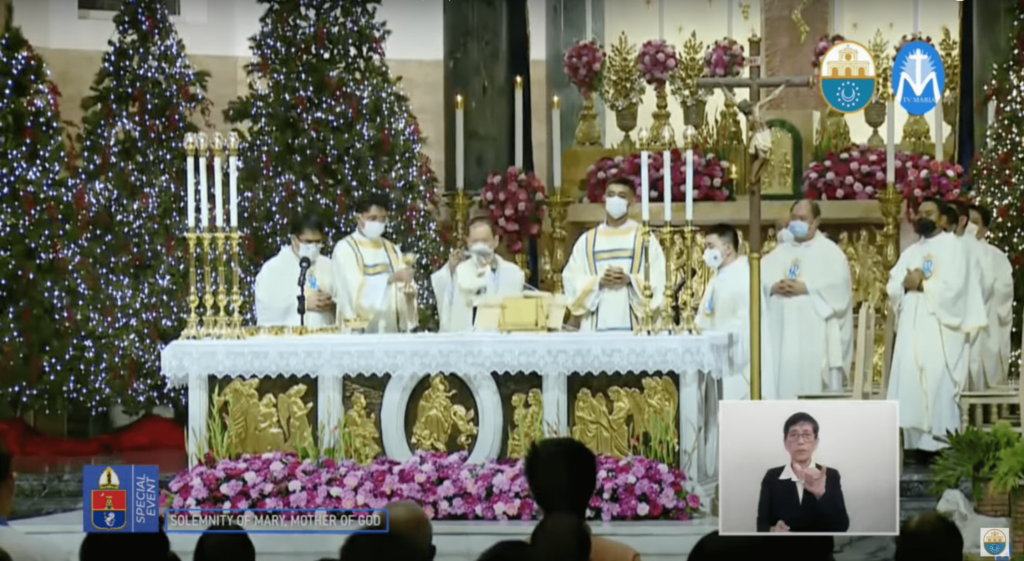 Image credit: Manila Cathedral via YouTube
Image credit: Manila Cathedral via YouTube
Beyond your usual midnight mass, and for those who can’t make it, one of the most recent Filipino Christmas traditions we observe is attending live-streamed masses. Christmas Eve Masses are now live-streamed, allowing family members who are abroad or unable to attend in person to participate in the religious tradition.
These live-streamed masses offer a profound sense of connection, enabling family members and loved ones, even if scattered across the globe, to virtually gather and share in the spiritual blessings of the season. It’s a heartwarming experience as people join in prayer, sing hymns, and listen to the message of hope and renewal, all while feeling intimately connected to the religious traditions that hold a special place in Filipino hearts.
In this digital age, the live-streamed masses not only provide a way to participate but also underscore the resilience and adaptability of the Filipino faith, ensuring that the Christmas and New Year’s celebrations remain deeply meaningful for all, regardless of physical proximity.
13. Waking up for Media Noche
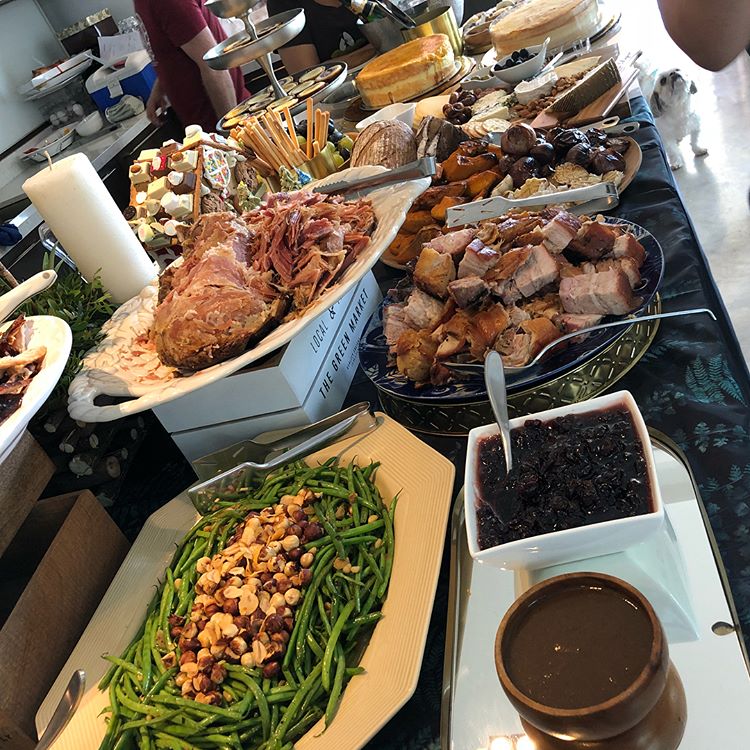
Image credit: @ogiealcasid via Instagram.
Christmas doesn’t end on the 25th for us Filipinos. While most welcome the new year by partying it up with friends, our family-centric culture observes one more lavish feast – Media Noche. The table is usually adorned with food formed into round shapes and an assortment of 12 round fruits since circles are believed to bring in good fortune.
Aside from that, there’s also the belief that loud sounds will keep evil spirits from entering the new year, so we make as much noise as possible when the clock strikes midnight – be it with car alarms, instruments, a torotot, or sparklers and firecrackers.
14. Ending Christmas in January with the Feast of the Three Kings
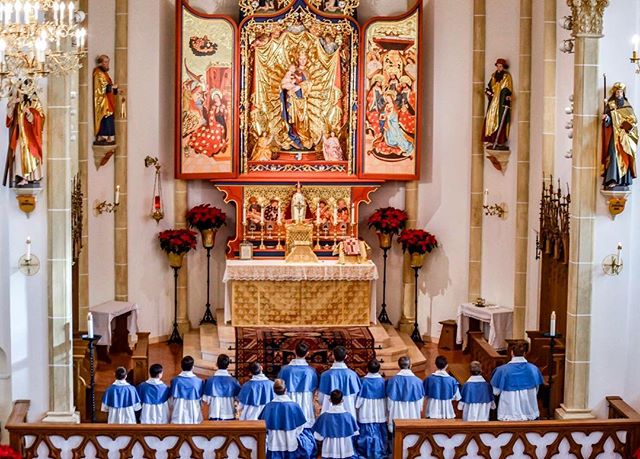
Image credit: @icksp via Instagram.
Even our priests say Christmas isn’t over until January. The Feast of the Three Kings, or the Epiphany, is the celebration of the day the Three Kings reached Jesus’ manger. It’s also considered the last day of our lengthy Christmas season. Epiphany occurs on the first Sunday of January, which means Christmas continues until well into the new year.
Filipino Christmas traditions for the joyous season
Our Christmas may not involve making snow angels or being bundled up in thick coats and scarves, but that doesn’t mean we don’t know how to have a good time. Though the Yuletide is well-known for its snowy and winter celebrations, our sunny, tropical country and our Christmas traditions make the holiday season warm and bright.
Shopping early for Christmas gifts? Check out these gift ideas your friends and family would love. You can also dine at Cafe Claus in Quezon City to really feel that Christmas vibes.
Cover image adapted from: @alwayshungryph via Instagram, @mhayapotzkee via Instagram, @taggeschau via Instagram, and Google Images
Article originally published on 20 December 2019 by Hazel Lumbre. Last updated by Gly Parañal on 22 September 2023.
